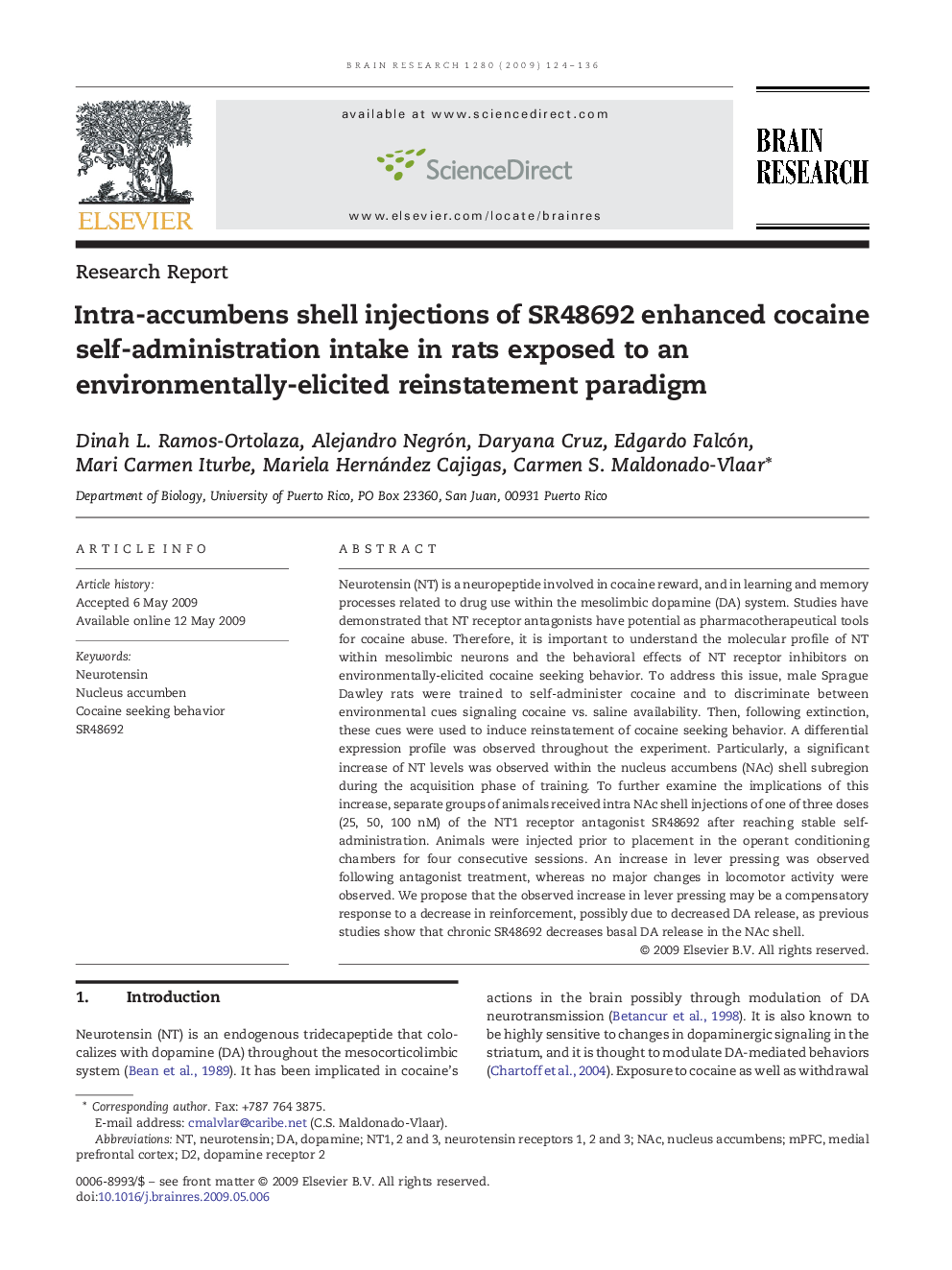| Article ID | Journal | Published Year | Pages | File Type |
|---|---|---|---|---|
| 4328066 | Brain Research | 2009 | 13 Pages |
Neurotensin (NT) is a neuropeptide involved in cocaine reward, and in learning and memory processes related to drug use within the mesolimbic dopamine (DA) system. Studies have demonstrated that NT receptor antagonists have potential as pharmacotherapeutical tools for cocaine abuse. Therefore, it is important to understand the molecular profile of NT within mesolimbic neurons and the behavioral effects of NT receptor inhibitors on environmentally-elicited cocaine seeking behavior. To address this issue, male Sprague Dawley rats were trained to self-administer cocaine and to discriminate between environmental cues signaling cocaine vs. saline availability. Then, following extinction, these cues were used to induce reinstatement of cocaine seeking behavior. A differential expression profile was observed throughout the experiment. Particularly, a significant increase of NT levels was observed within the nucleus accumbens (NAc) shell subregion during the acquisition phase of training. To further examine the implications of this increase, separate groups of animals received intra NAc shell injections of one of three doses (25, 50, 100 nM) of the NT1 receptor antagonist SR48692 after reaching stable self-administration. Animals were injected prior to placement in the operant conditioning chambers for four consecutive sessions. An increase in lever pressing was observed following antagonist treatment, whereas no major changes in locomotor activity were observed. We propose that the observed increase in lever pressing may be a compensatory response to a decrease in reinforcement, possibly due to decreased DA release, as previous studies show that chronic SR48692 decreases basal DA release in the NAc shell.
